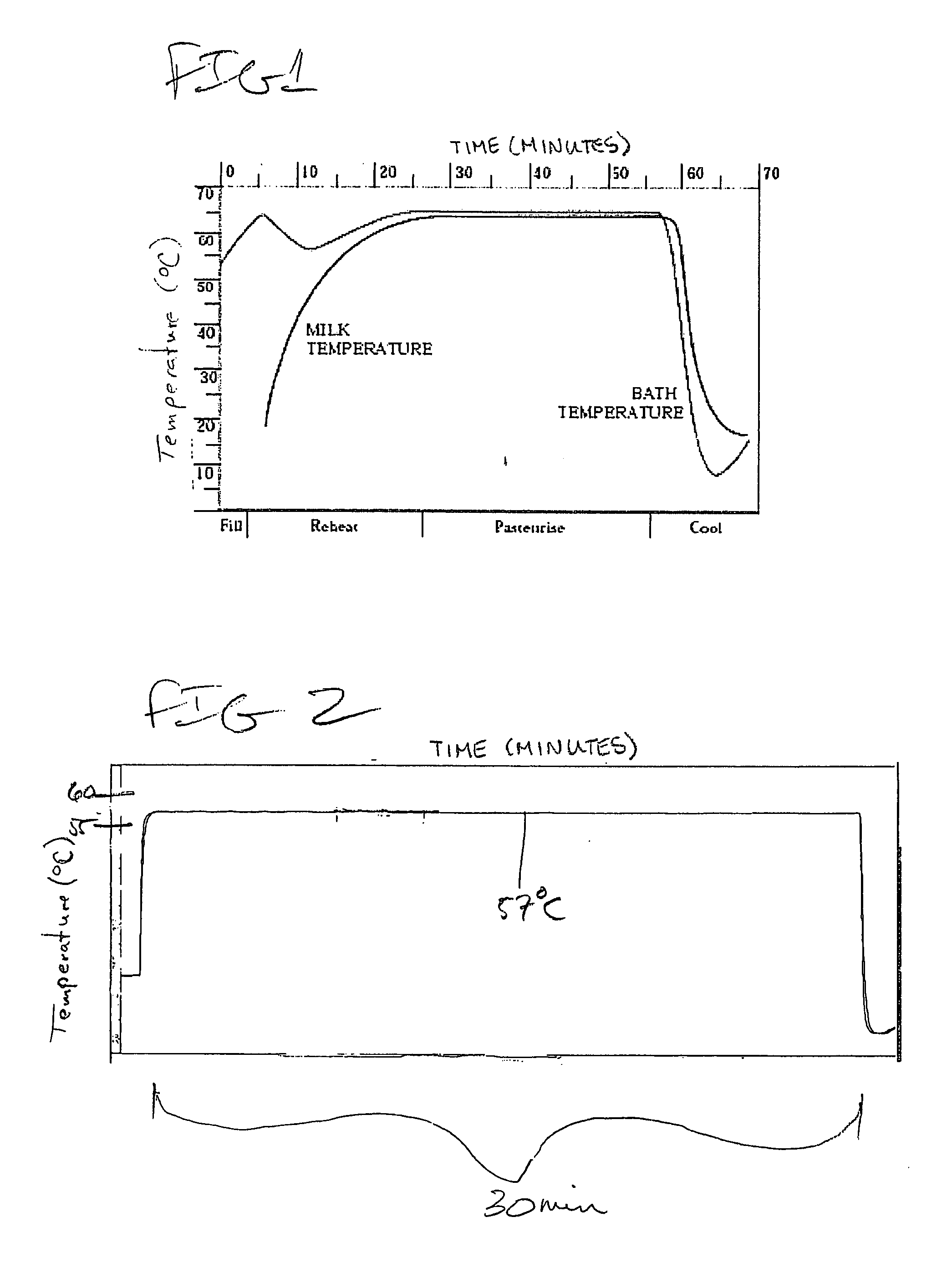Treatment of mother's milk
a technology of mother's milk and milk, which is applied in the field of preservation of mother's milk, can solve the problems of affecting the preservation effect of milk, and not being able to achieve the desired effect, reducing the effect of harmful bacteria, and reducing the effect of bacterial
- Summary
- Abstract
- Description
- Claims
- Application Information
AI Technical Summary
Benefits of technology
Problems solved by technology
Method used
Image
Examples
Embodiment Construction
[0014]FIG. 1 shows a typical prior art technique for pasteurizing mother's milk (Sterifeed model). As will be noted, this technique uses a heating bath that relatively slowly brings the milk temperature up to a level over 60° C. (about 63° C.), where it is held for about 30 minutes. Then, a relatively slow cooldown occurs.
[0015] It is considered to be a major improvement, however, to bring the milk to a pasteurization temperature more rapidly, such as in about one (or even less than one) to five minutes, and to lower the temperature at which pasteurization is to be effected to at or below about 60° C., and most preferably about 57° C. This improved protocol is depicted in FIG. 2.
[0016] Applicant has determined that there is about a 60% retention of sIgA (Secretory immunoglobulin A) at an “accepted” milk banking temperature of 62.5° C. for 30 minutes. Yet at 57° C. for the same 30 minutes there is almost total retention. Further, deleterious bacteria will tend to be affected by rap...
PUM
 Login to View More
Login to View More Abstract
Description
Claims
Application Information
 Login to View More
Login to View More - R&D
- Intellectual Property
- Life Sciences
- Materials
- Tech Scout
- Unparalleled Data Quality
- Higher Quality Content
- 60% Fewer Hallucinations
Browse by: Latest US Patents, China's latest patents, Technical Efficacy Thesaurus, Application Domain, Technology Topic, Popular Technical Reports.
© 2025 PatSnap. All rights reserved.Legal|Privacy policy|Modern Slavery Act Transparency Statement|Sitemap|About US| Contact US: help@patsnap.com



